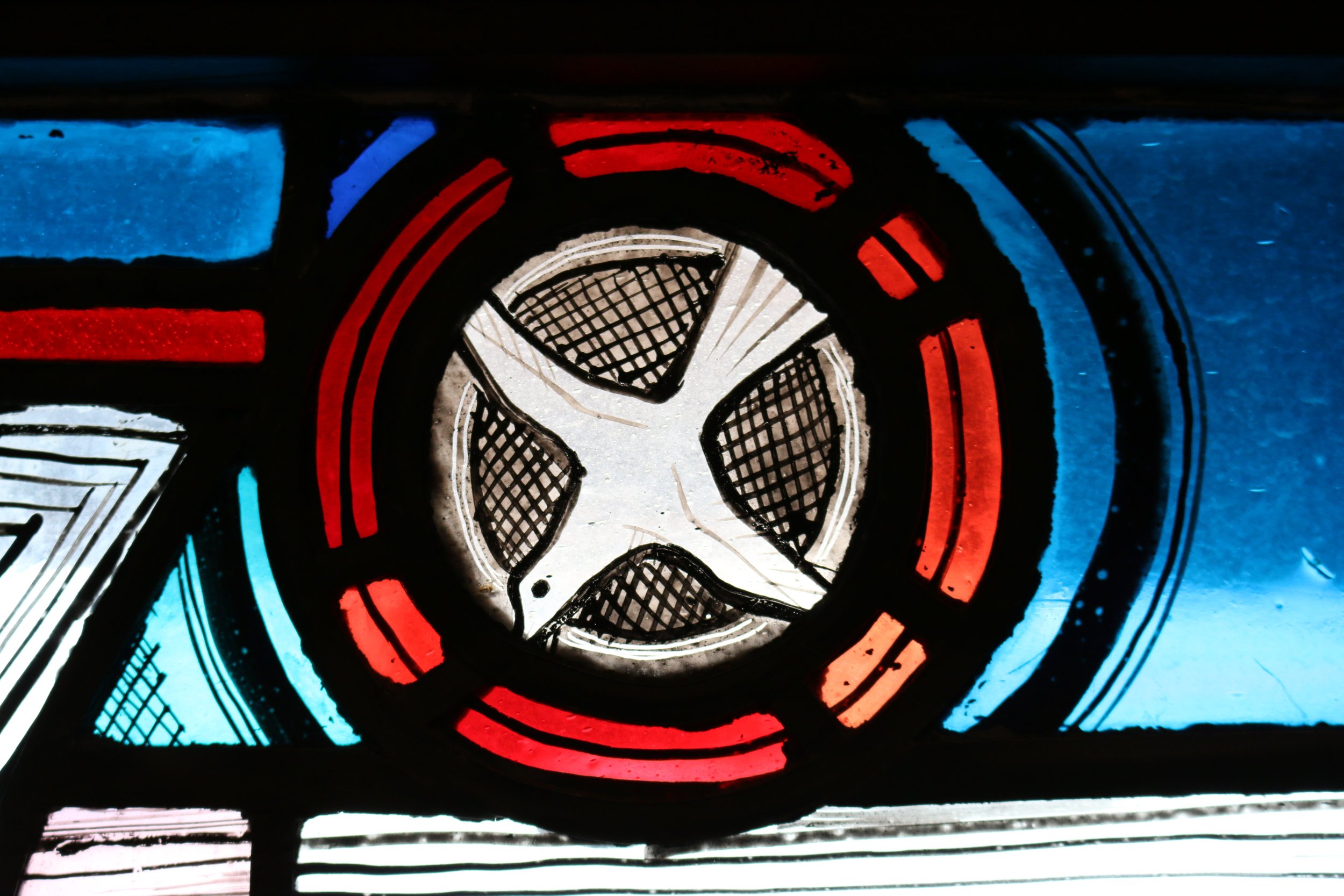Religious Art at St. David's Episcopal Church
Aurora, Illinois
1960-1961
Stained glass windows, woodcarvings, and sculpture
Designed and executed towards the end of Edgar Miller’s formal career in Chicago was St. David’s Episcopal Church in Aurora, Illinois. The various artworks that Miller designed and installed from 1960-1961 include stained glass windows, a carved wall in the baptistery, and a six-foot Christus Rex sculpture hanging above the altar.
Much of the information relayed to Edgar Miller Legacy about this project came from Kate Milliman, the church historian and custodian. Set back from the intersection of Randall Road and Illinois Avenue, the church is surrounded by a large lawn lined with trees. When entering the main room of the medium-sized church one is struck by its midcentury modern feel emerging from a more traditional pre-modern design. This simplicity is highlighted by the atmosphere of strong overhead lights and meditative sounds of the organ pervading through the rafters and over the pews. The organ player is none other than Mrs. Milliman’s husband.
The church, made of imposing, dark wood, harkens back to Anglo-Saxon architecture appropriate for an Episcopal site. Tall, vaulted ceilings supported by massive wooden beams bring a monolithic feel to the otherwise minimalistic interior. But the simplicity ends there, because a jolt of kaleidoscopic color comes in through bands of rectilinear stained-glass windows flanking both sides of the nave. Unfortunately Edgar only crafted eight of the windows himself before an issue with funding prevented him from completing them. At some point later, after Edgar had moved to Florida with his wife Dale to retire, the windows were completed by another artisan in an attempt to mimic Miller’s style. However, Edgar’s windows are much more detailed: intricately painted with whimsical flourishes and a more complicated glass arrangement.
Completely unique is the church’s Christus Rex hanging over the altar, which Edgar carved. Unlike the most common crucifixion image, the Christus Rex shows Jesus Christ as a crowned King. Miller shows Christ as a triumphant and stately, emphasizing the fundamental nature of the Christian godhead in the Holy Trinity. One might assume that Miller was a religious man based on the amount of liturgical art he made so well, but in fact Miller was essentially agnostic and a fierce critic of dogmatic religion. That didn’t stop him from learning and appreciating the histories and details of the world’s religions, and those stories provided unlimited fodder for the creation of artwork, Miller’s true religion.
Also on prominent display is the baptistery, which Edgar carved showing an image of St. John the Baptist pouring holy water over the head of Jesus. It is one of the simpler pieces of work that Edgar produced for the project, but it is still an example of a uniquely crafted detail with the intention to convey not just a particular scene but also devout emotion.
The windows done while Edgar was in his sixties remain just as superb as any of Miller’s stained glass from his youth.
A debt of gratitude belongs to the entire congregation of St. David’s as well as their expert historians like Kate Milliman, who are dedicated to stewarding the legacy and preservation of these incredible pieces of religious art by Miller.








